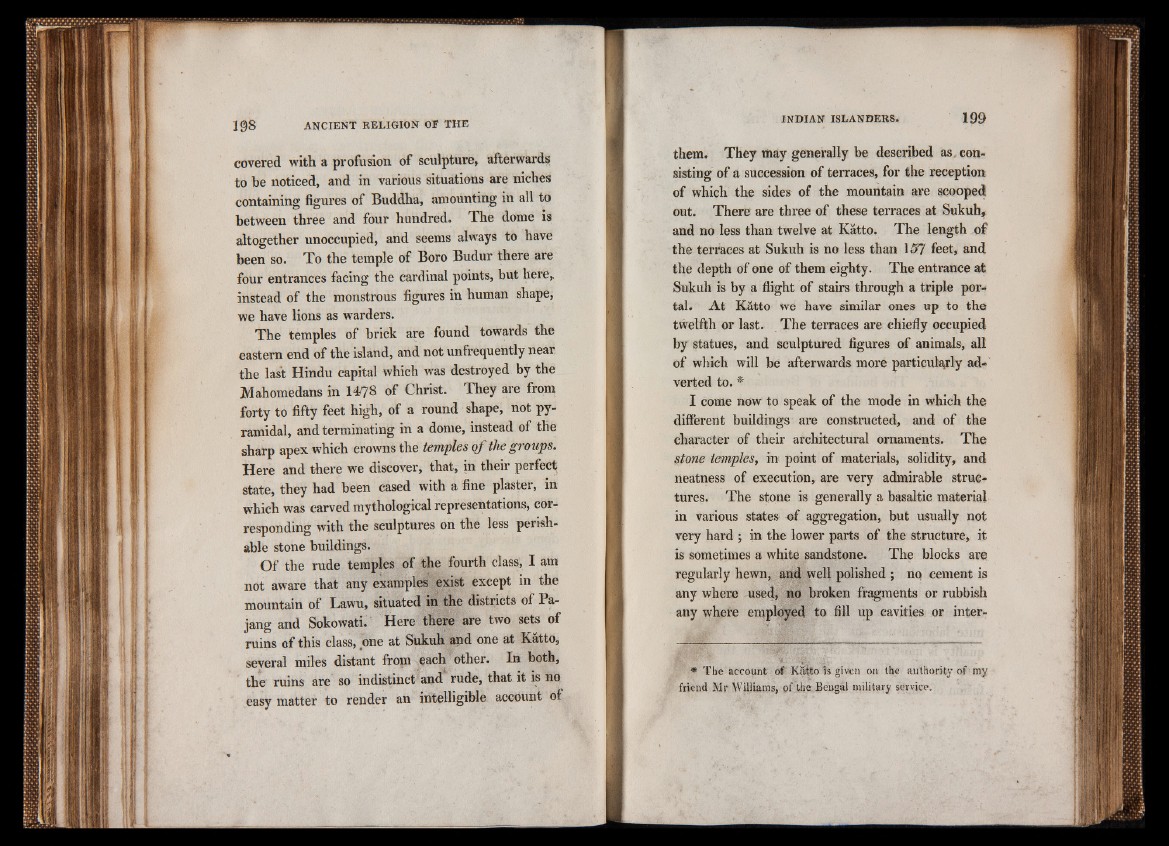
covered with a profusion of sculpture, afterwards
to be noticed, and in various situations are niches
containing figures of Buddha, amounting in all to
between three and four hundred. The dome is
altogether unoccupied, and seems always to have
been so. To the temple of Boro Budur there are
four entrances facing the cardinal points, but here,
instead of the monstrous figures in human shape,
we have lions as warders.
The temples of brick are found towards the
eastern end of the island, and not unfrecpiently near,
the last Hindu capital which was destroyed by the
Mahomedans in 1478 of Christ. They are from
forty to fifty feet high, of a round shape, not pyramidal,
and terminating in a dome, instead of the
sharp apex which crowns the temples of the groups.
Here and there we discover, that, in their perfect
state, they had been cased with a fine plaster, in
which was c a r v e d mythological representations, corresponding
with the sculptures on the less perishable
stone buildings.
Of the rude temples of the fourth class, I am
not aware that any examples exist except in the
mountain of Lawu, situated in the districts of Pa-
jang and Sokowati. Here there are two sets of
ruins of this class, tone at Sukuh apd one at Katto,
several miles distant from each other. In both,
the ruins are so indistinct" and rude, that it is no
easy matter to render an intelligible account of
IN D IA N ISLANDERS. 1 9 9
them. They may generally be described as, consisting
of a succession of terraces, for the reception
of which the sides of the mountain are scooped
out. There are three of these terraces at Sukuh,
and no less than twelve at Kátto. The length of
the terraces at Sukuh is no less than 157 feet, and
the depth of one of them eighty. The entrance at
Sukuh is by a flight of stairs through a triple portal.
At Kátto we have similar ones up to the
twelfth or last. The terraces are chiefly occupied
by statues, and sculptured figures erf animals, all
of which will be afterwards more particularly adverted
to. *
I come now to speak of the mode in which the
different buildings are constructed, and of the
character of their architectural ornaments. The
stone temples, in point of materials, solidity, and
neatness of execution, are very admirable structures.
The stone is generally a basaltic material
in various states of aggregation, but usually not
very hard ; in the lower parts of the structure, it
is sometimes a white sandstone. The blocks are
regularly hewn, and well polished ; no cement is
any where used* no broken fragments or rubbish
any where employed to fill up cavities or inter*
The account of Katto is given on the authority of my
friend Mr Williams, pf the Bengal military service.